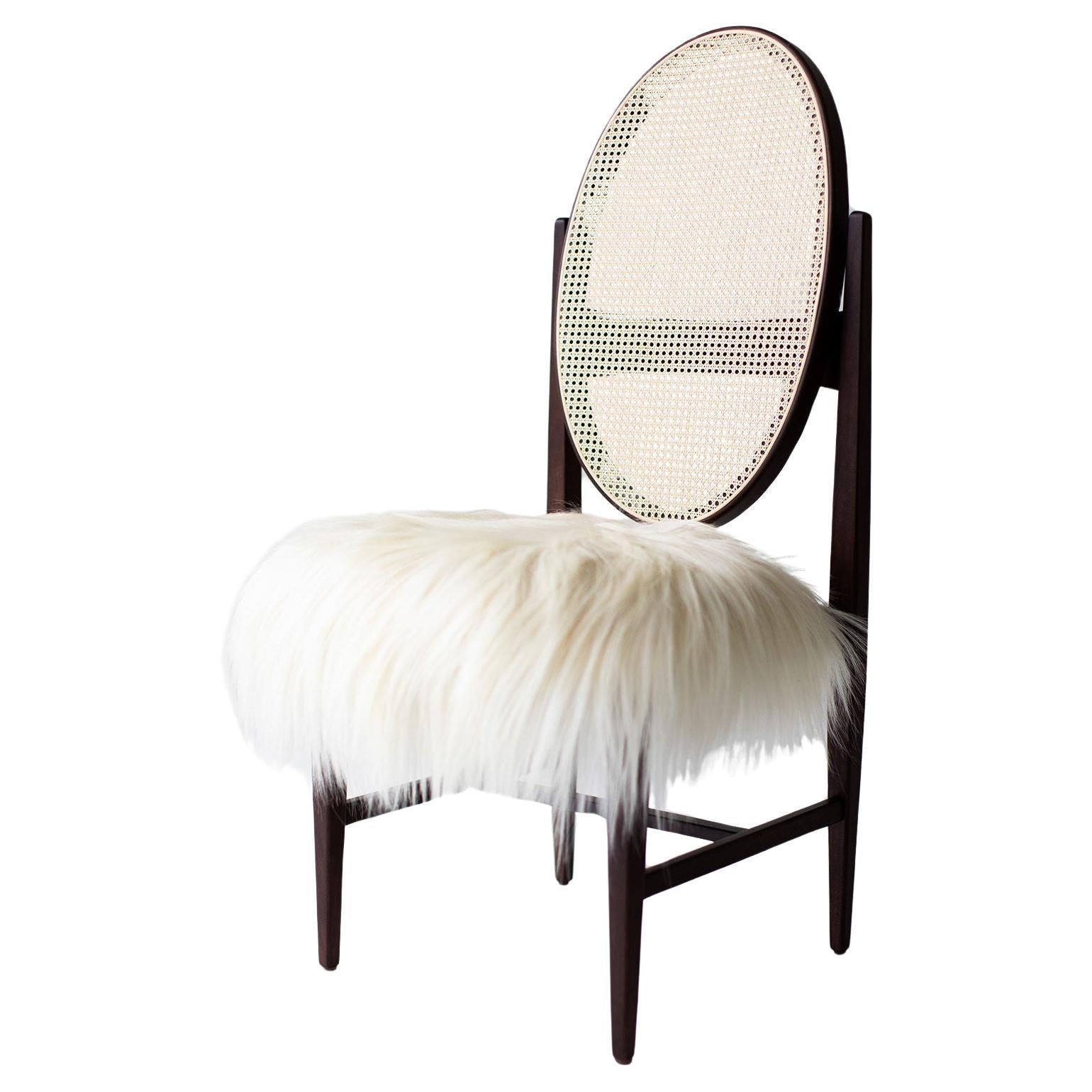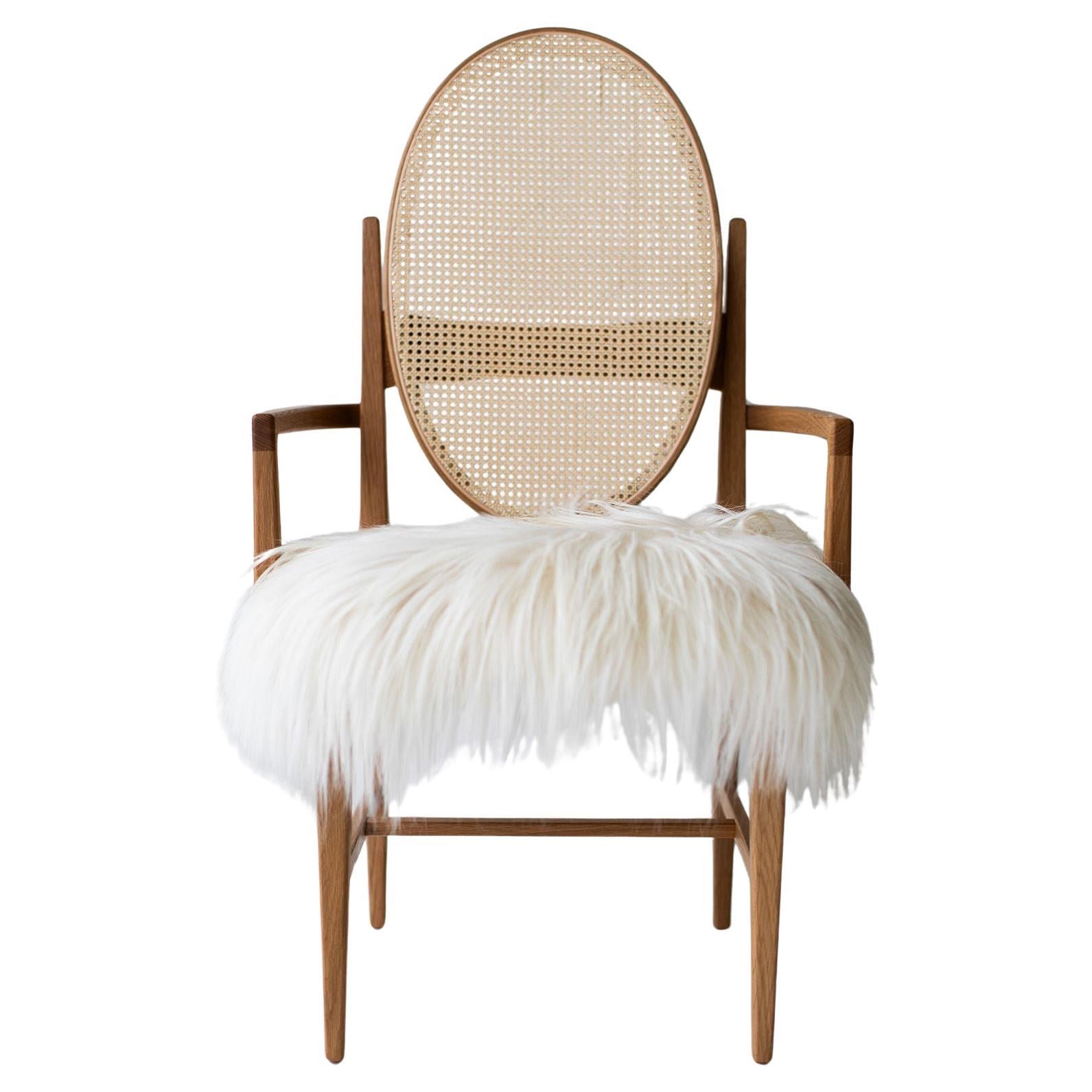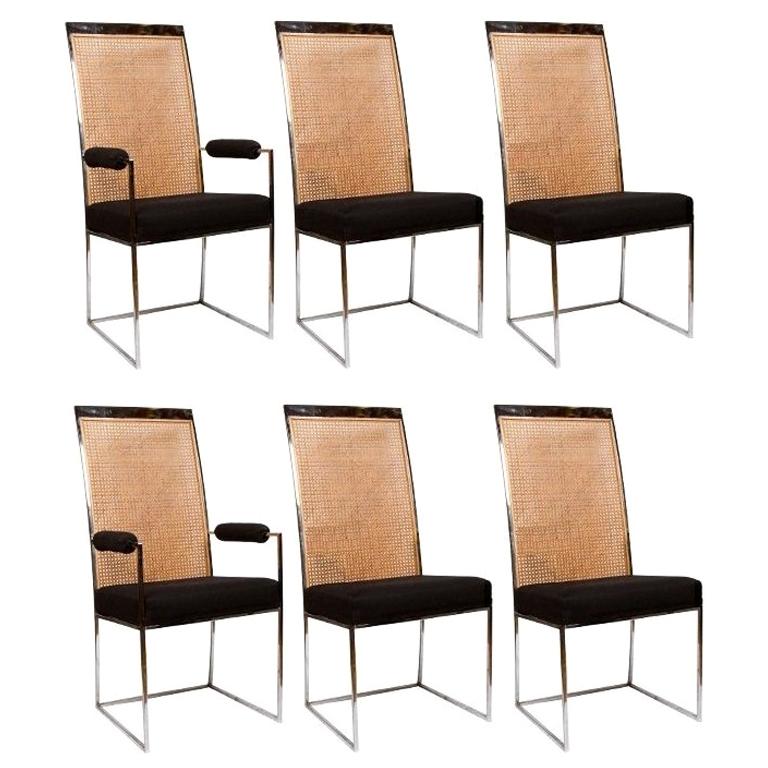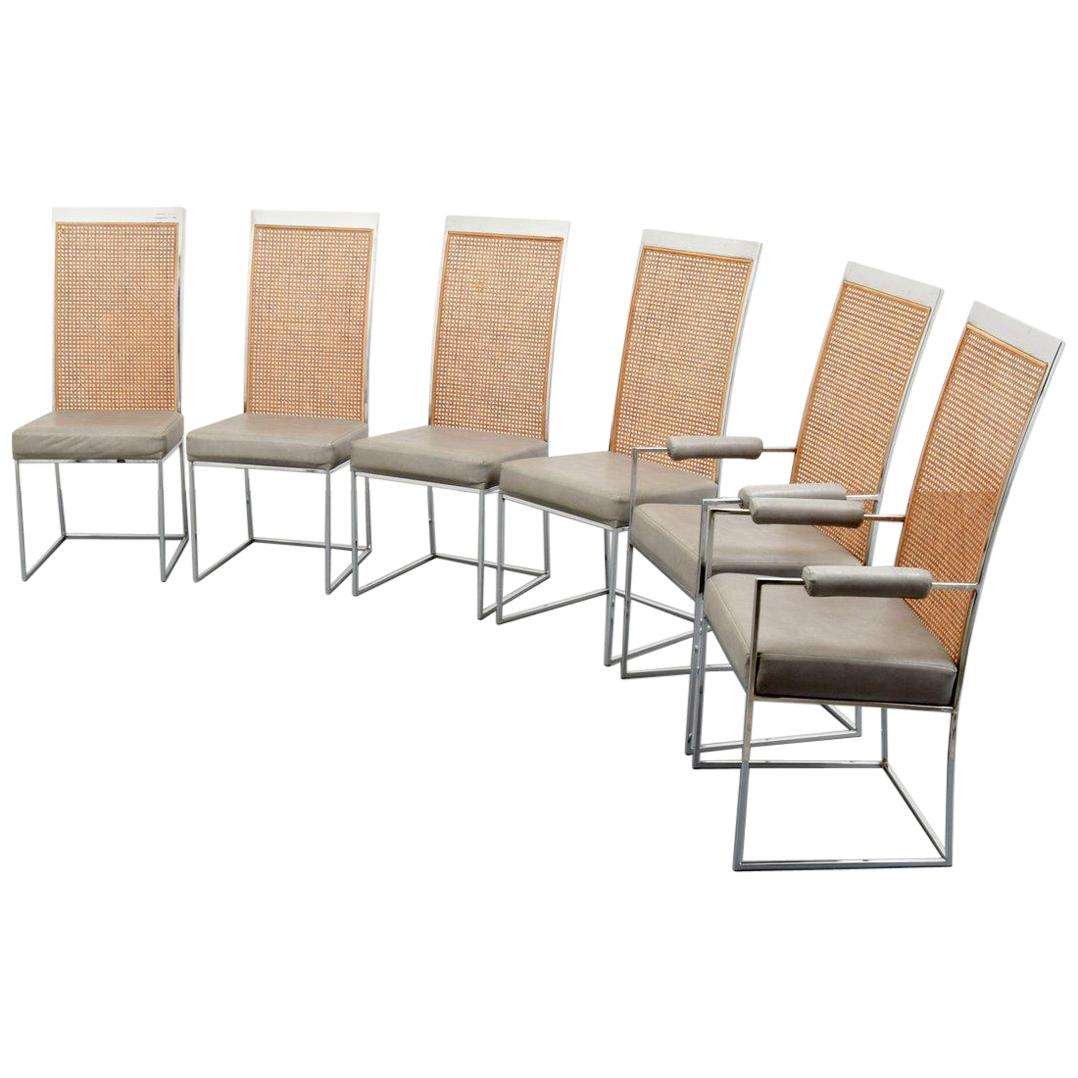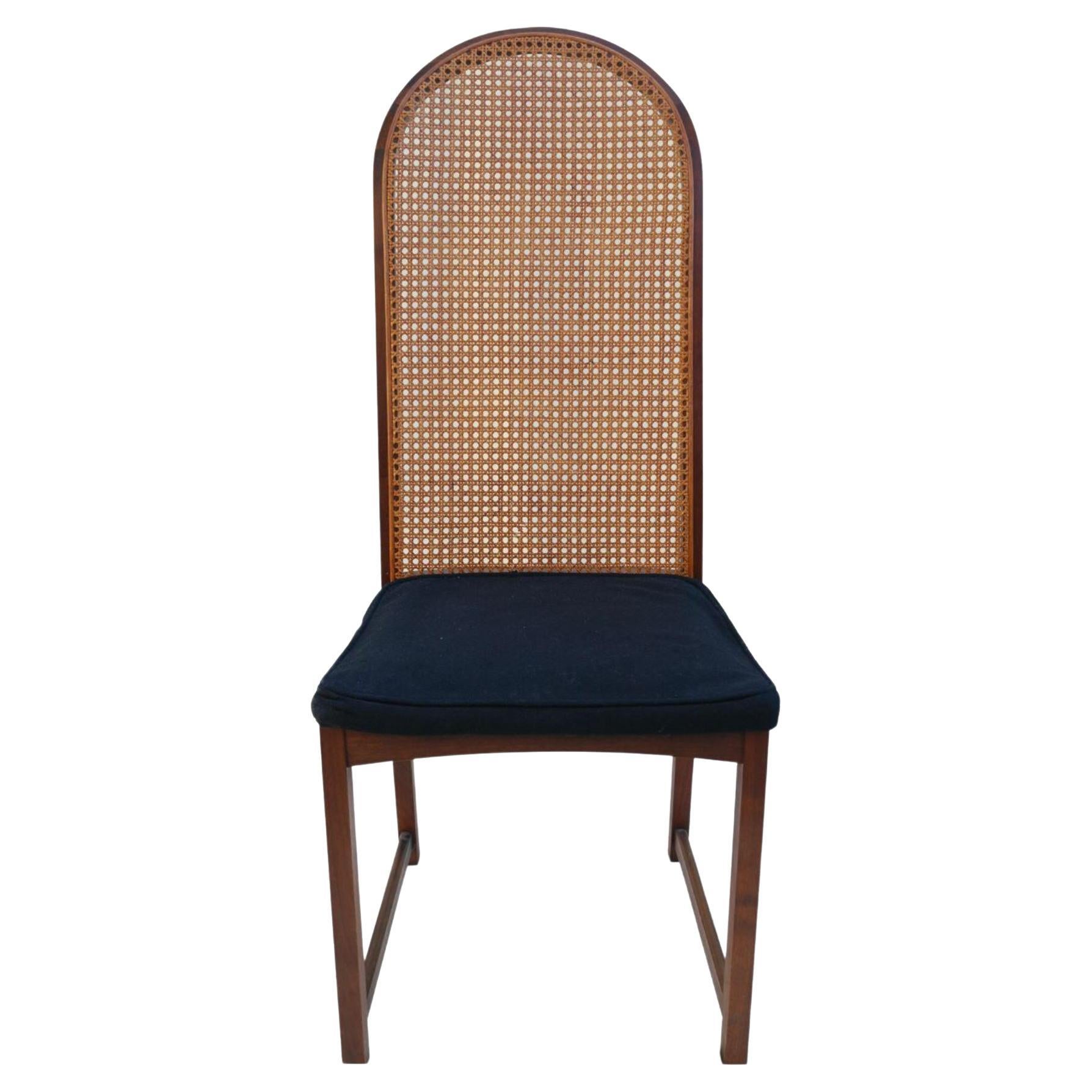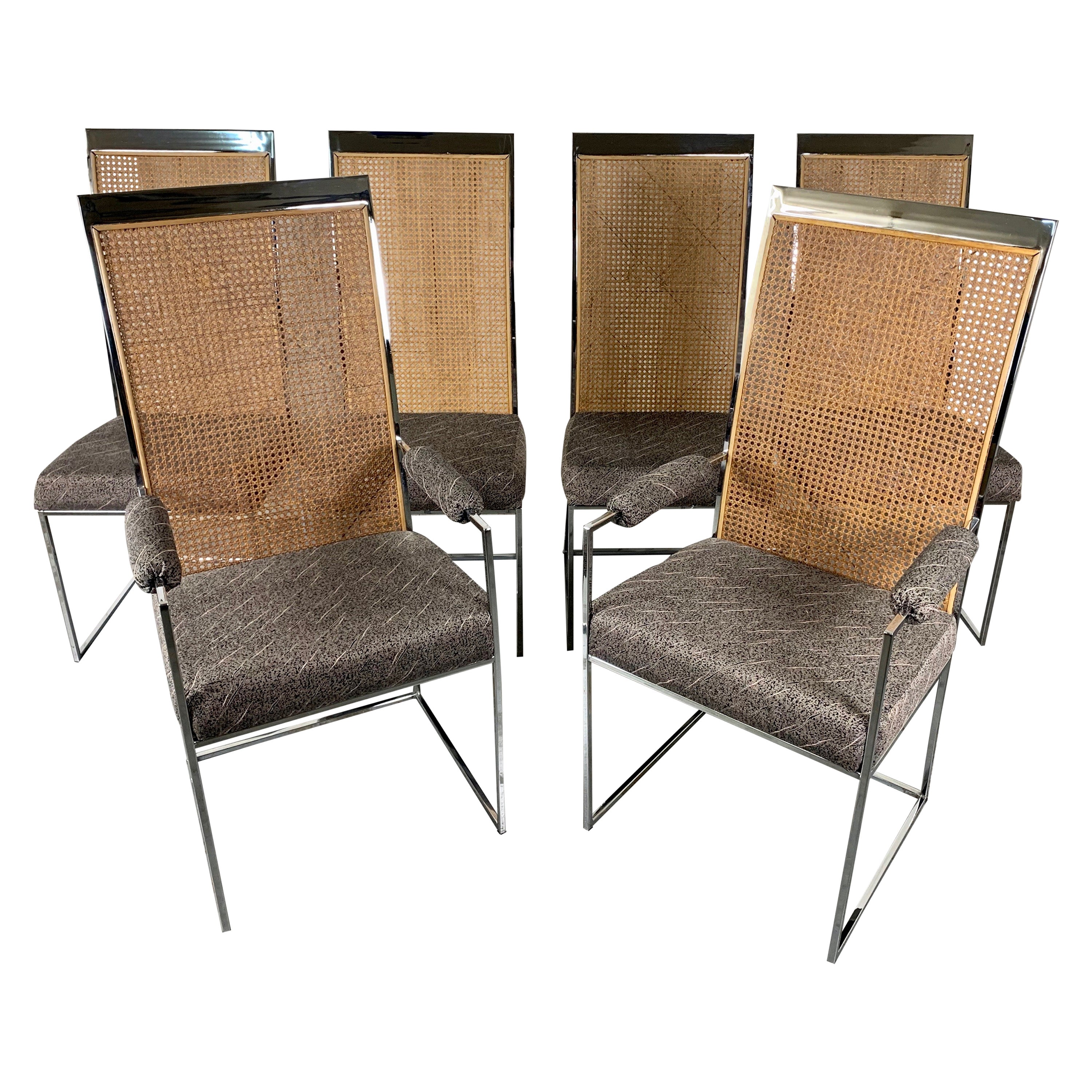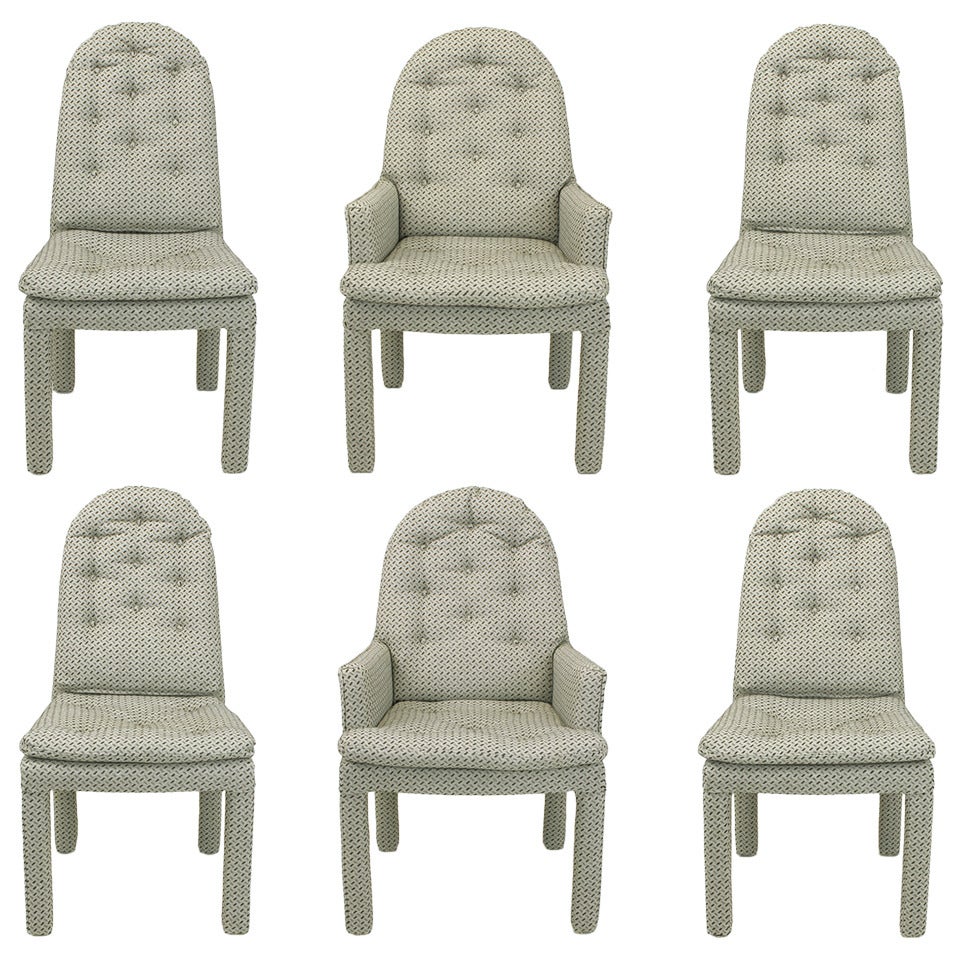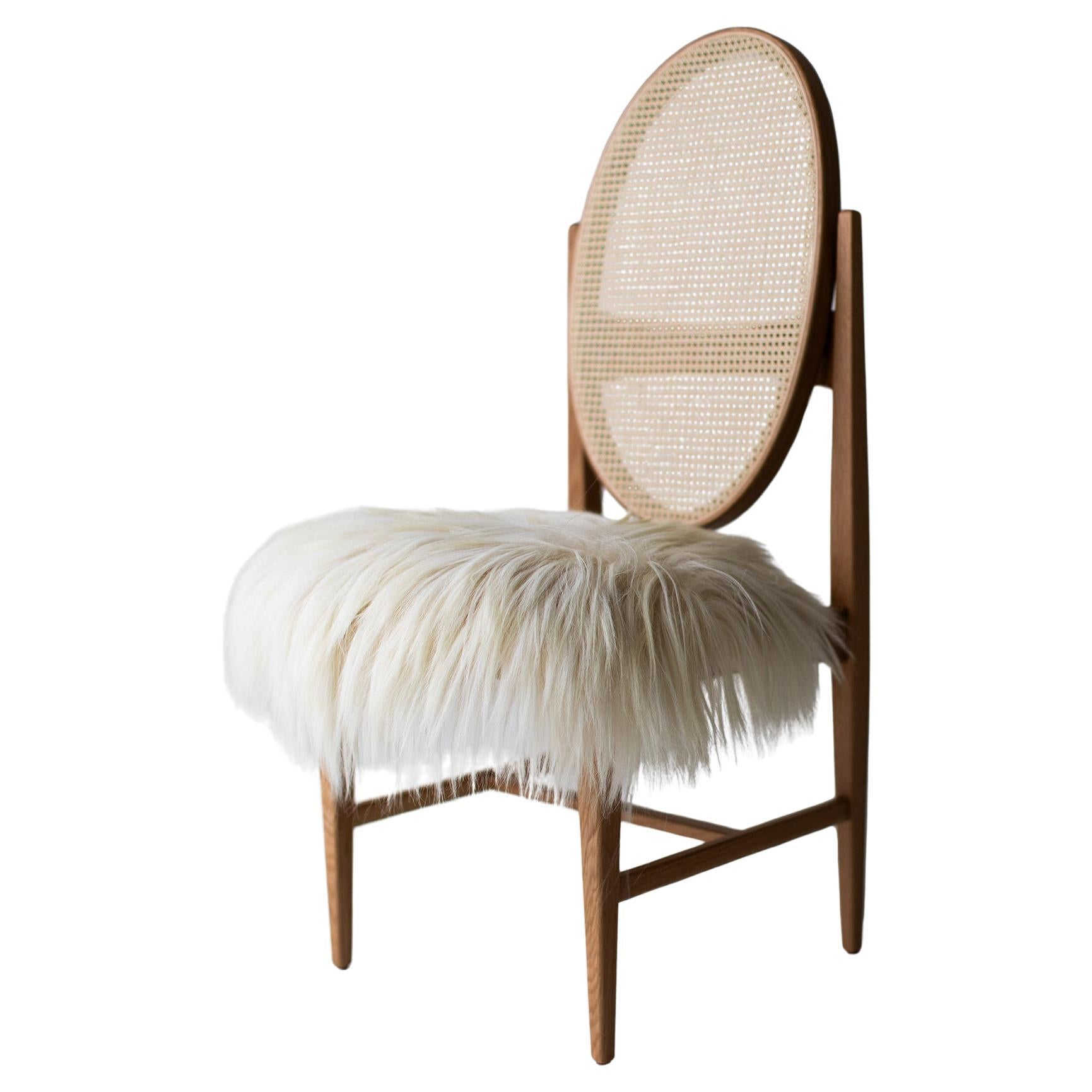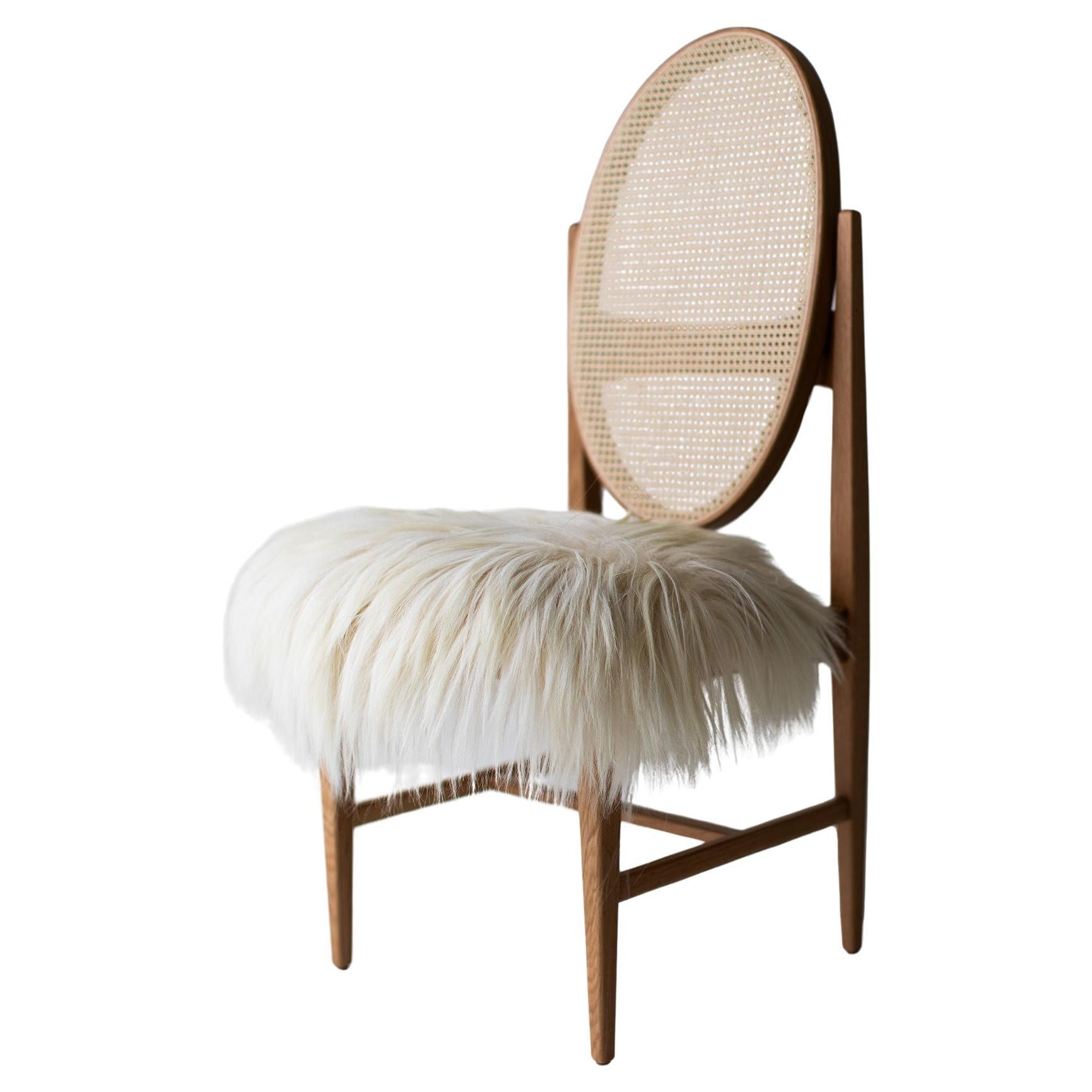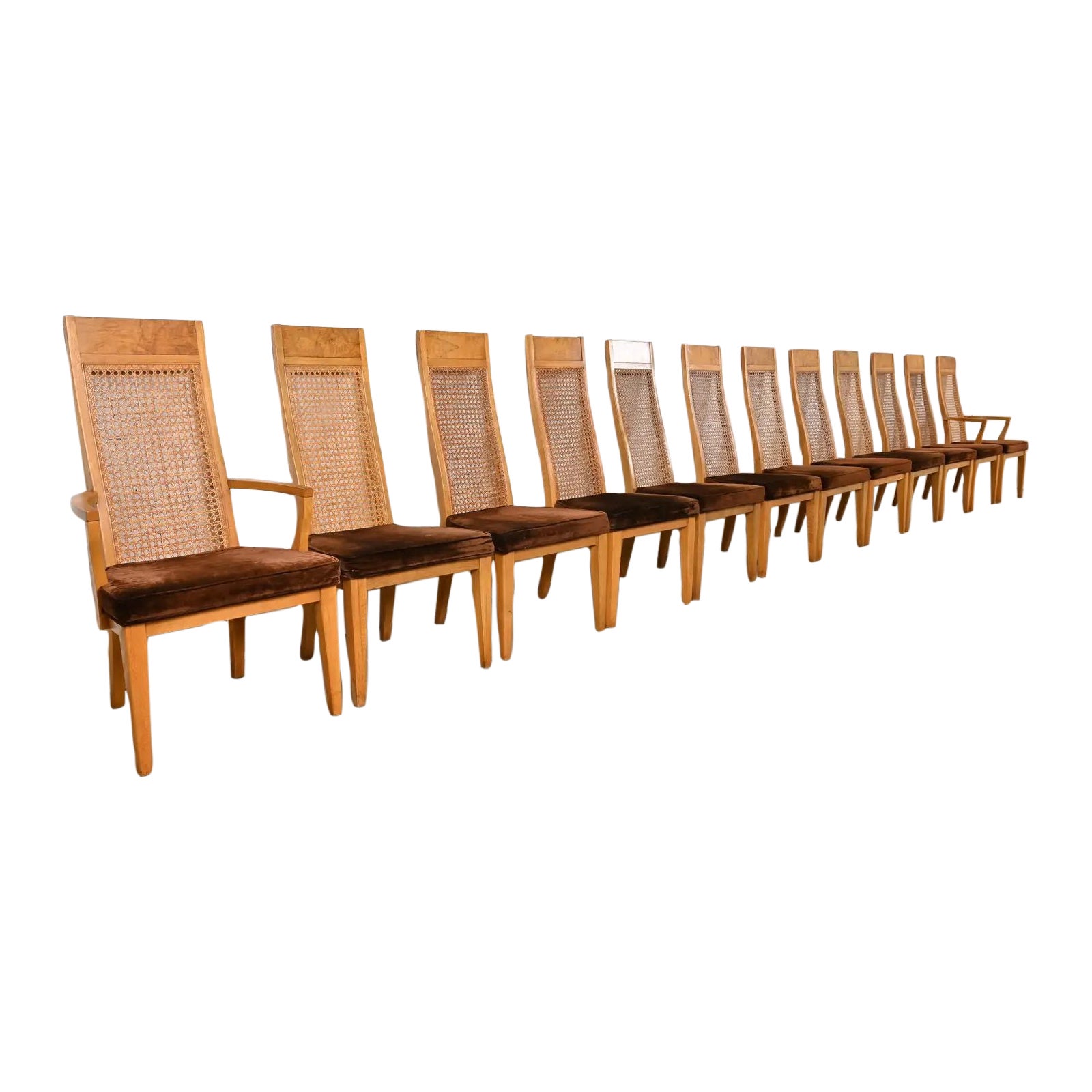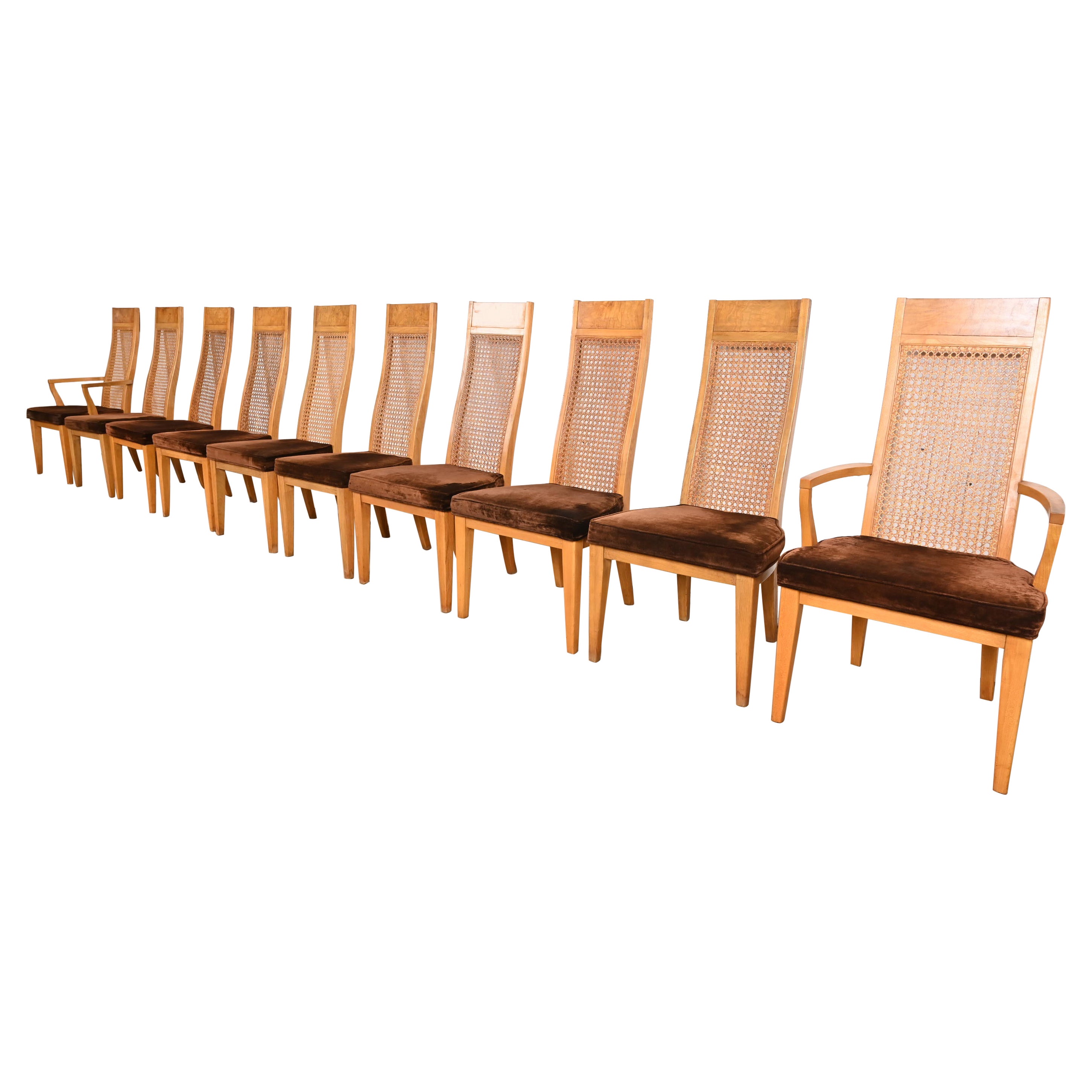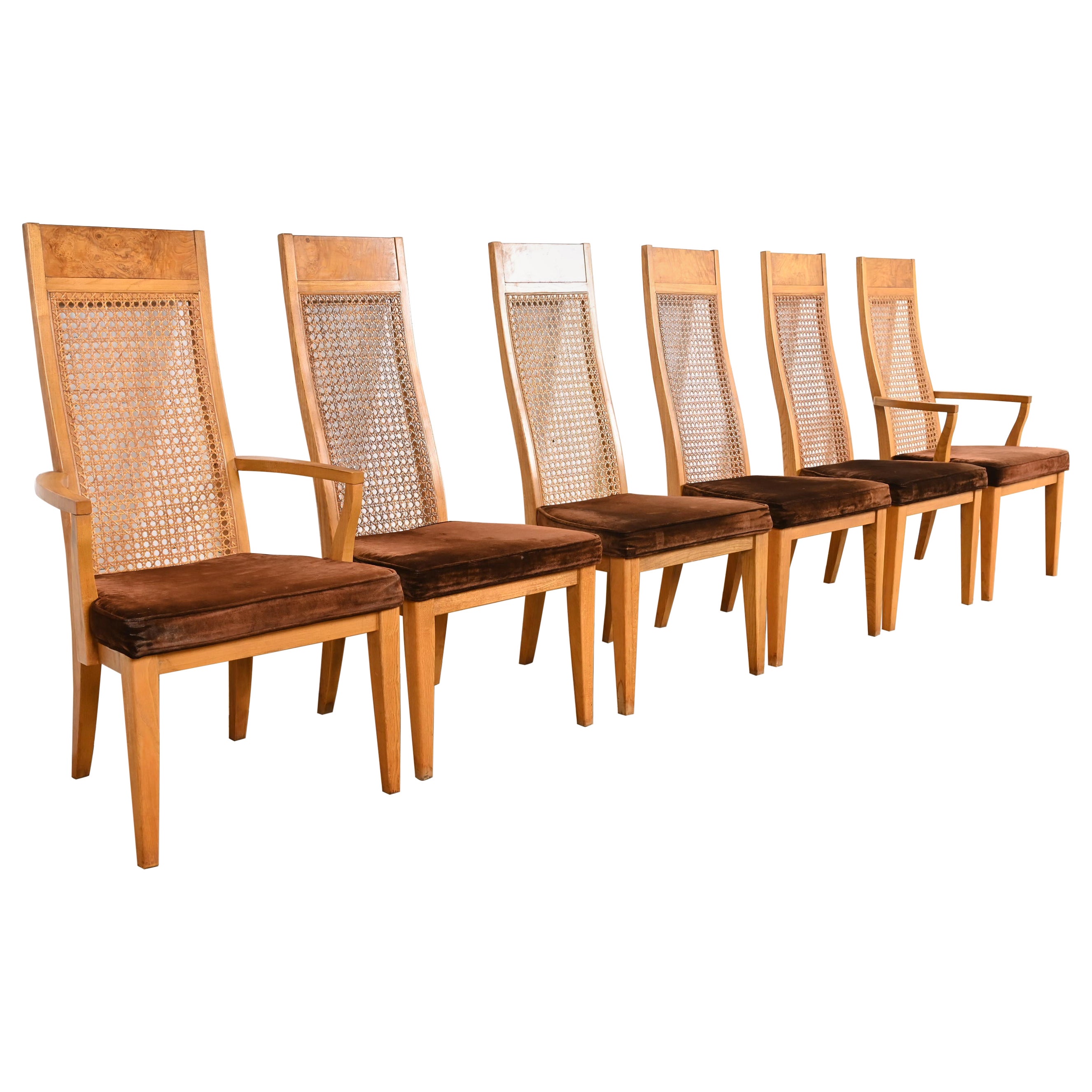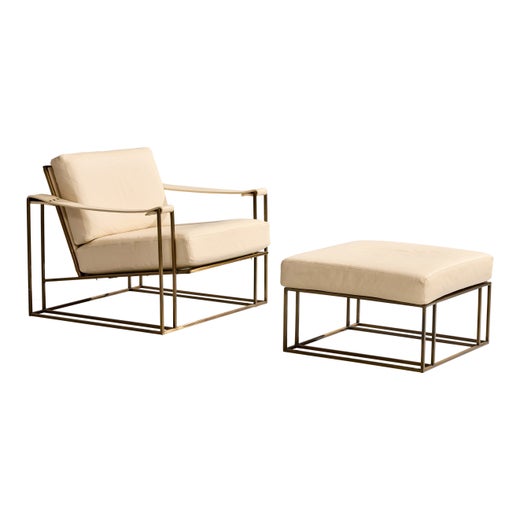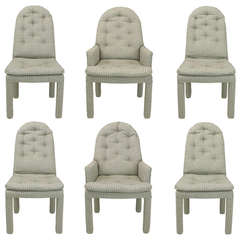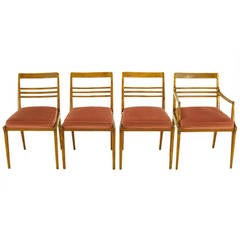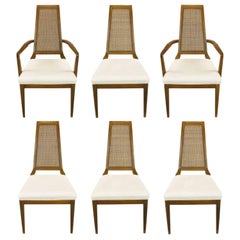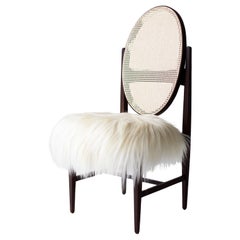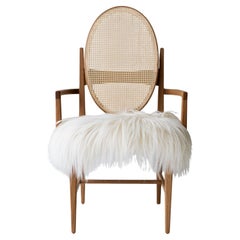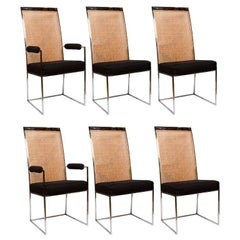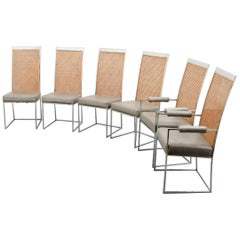
Four Milo Baughman Walnut & Cane Arch-Back Dining Chairs
View Similar Items
Four Milo Baughman Walnut & Cane Arch-Back Dining Chairs
About the Item
- Creator:Johnson Furniture Co. (Manufacturer),Milo Baughman (Designer)
- Dimensions:Height: 45 in (114.3 cm)Width: 22.5 in (57.15 cm)Depth: 23 in (58.42 cm)Seat Height: 19 in (48.26 cm)
- Sold As:Set of 4
- Materials and Techniques:
- Place of Origin:
- Period:
- Date of Manufacture:Circa1960s
- Condition:Wear consistent with age and use. Very good vintage condition.
- Seller Location:Chicago, IL
- Reference Number:1stDibs: LU84191035088
Milo Baughman
Milo Baughman was one of the most agile and adept modern American furniture designers of the late 20th century. A prolific lecturer and writer on the benefits of good design — he taught for years at Brigham Young University — Baughman (whose often-scrambled surname is pronounced BAWF-man) focused almost exclusively on residential furnishings, such as chairs, sofas and benches. He had a particular talent for lounge chairs, perhaps the most sociable piece of furniture.
Like his fellow adoptive Californians Charles and Ray Eames, Baughman’s furniture has a relaxed and breezy air. He was famously opposed to ostentatious and idiosyncratic designs that were made to excite attention. While many of his chair designs are enlivened by such effects as tufted upholstery, Baughman tended to let his materials carry the aesthetic weight, most often relying on seating and table frames made of sturdy and sleek flat-bar chromed metal, and chairs, tables and cabinets finished with highly-figured wood veneers.
Like his colleagues Karl Springer and the multifarious Pierre Cardin, Baughman’s designs are emblematic of the 1970s: sleek, sure and scintillating.
As you will see from the furniture presented on 1stDibs, Milo Baughman’s designs for the likes of Drexel Furniture, Glenn of California and — for five decades — Thayer Coggin are ably employed as either the heart of a décor or its focal point.
Johnson Furniture Co.
Take a medal from the King of Sweden, a splash of the roaring twenties, and a series of talented designers and you get Johnson Furniture Co.’s elegant Art Deco and period-revival furnishings as well as a taste for why the Johnson name prevailed for over a century in American furniture manufacturing.
A wealth of forests rendered Grand Rapids, Michigan, a logging center during the 1800s. It eventually gained recognition for its furniture industry. The city became a destination for woodworkers who hailed from all over the United States as well as Europe, and Johnson Furniture Co. cofounder Carl Johnson, who had been recognized for cabinetmaking by the head of the royal family in his native Sweden, brought his royally acknowledged talents to America with his two brothers, Hjalmar and Axel in 1887. Together, they established Cabinetmakers Co. in Grand Rapids. In 1908, the brothers sold their start-up and founded Johnson Furniture Co.
Tom Handley, of the well-respected English furniture company Waring and Gillow, became an in-house designer with Johnson Furniture Co. in its early days. Handley would stay on as part of both the Johnson label and of Johnson-Handley-Johnson — a companion company that spun off from Johnson in 1922 — until his death in 1926. At the time, archaeological discoveries were all the rage. The greatest influence on Art Deco jewelry, for example, was the excavation of the tomb of King Tut in 1922, and some vintage Tom Handley designs were adaptations of Egyptian furniture. The brand specialized in a range of styles that included Art Deco, Chippendale, Queen Anne and more.
Acclaimed designer David Robertson Smith, who had made furniture in the Arts and Crafts style for the likes of Gustav Stickley, carried the Johnson Furniture Co. creative team into the early 1930s. Grand Rapids had by then become a thriving hub with respect to the mass production of furniture, and Smith’s sophisticated Dynamique line — a collection of coffee tables, cabinets and more in alluring woods such as walnut and mahogany and based on French furniture — was among the first mass-produced modern furniture made in America.
Johnson hired Lorenzo Rutili, a Carnegie Institute graduate who studied design in Europe, to lead the brand’s design division. Rutili oversaw 30 years of successful Johnson Furniture Co. collaborations with other notable designers including Paul Frankl, Eliel Saarinen, Bert England, J. Robert F. Swanson and Pipsam Saarinen Swanson. After wrapping up his tenure at Johnson, Rutili moved on to design furniture at Tomlinson in North Carolina.
During the 1960s, Kipp Stewart and Milo Baughman designed residential furnishings for Directional — a favorite of mid-century modern furniture enthusiasts — and Johnson produced these pieces, becoming the sole manufacturer for the North Carolina brand.
After a merger with Timberline Inc., Johnson Furniture Co. secured contracts for hotels, motels and university dormitories. In 1983, Johnson and Rose Manufacturing became RoseJohnson Inc. It was later purchased by La-Z-Boy.
On 1stDibs, find a collection of vintage Johnson Furniture Co. case pieces and storage cabinets, tables and other furniture.
More From This Seller
View AllLate 20th Century American Dining Room Chairs
Wood
Vintage 1950s American Dining Room Chairs
Upholstery, Walnut
Vintage 1950s American Dining Room Chairs
Maple
Vintage 1950s American Dining Room Chairs
Cane, Cotton, Walnut
Vintage 1950s American Dining Room Chairs
Maple
Vintage 1950s American Dining Room Chairs
Silk, Walnut
You May Also Like
2010s American Modern Dining Room Chairs
Sheepskin, Cane, Wood, Walnut
2010s American Modern Dining Room Chairs
Sheepskin, Wood, Oak
Vintage 1970s American Mid-Century Modern Dining Room Chairs
Chrome
Vintage 1970s American Mid-Century Modern Dining Room Chairs
Chrome
Vintage 1960s American Mid-Century Modern Dining Room Chairs
Wood
20th Century American Mid-Century Modern Dining Room Chairs
Chrome
